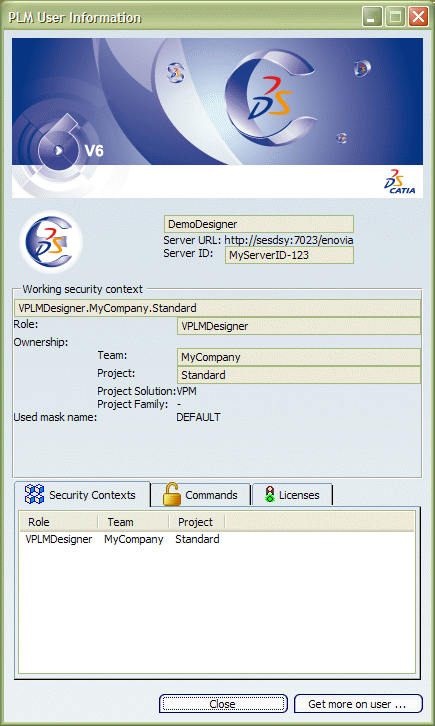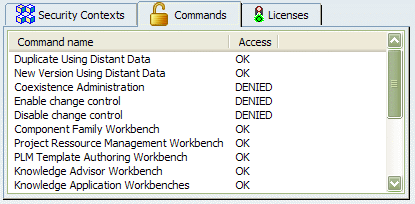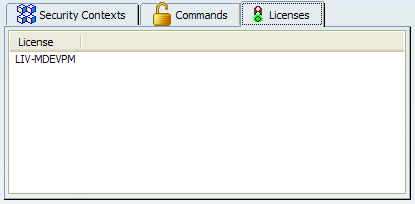Displaying PLM User Information | ||
| ||
Select Help > PLM User Information (or press Ctrl+F1).

The following information is displayed in the upper part of the dialog box:
- Userxxx
- The id of the current user.
- Server URL
- The URL of your ENOVIA V6 server. For example:
http://hostname:7023/enovia
- Server Id
- This string helps to identify the server instance ID, since the server URL may not be sufficient to identify the server.
The server id is only displayed if the administrator sets it on the ENOVIA V6 server as follows:
- on Windows, add the following property to the JAVA_OPTS variable for your application server (for example, Tomcat):
-DENOVIA_SID=MyServerID
- on UNIX, add the following line to the mxEnv.sh file:
ENOVIA_SID=MyServerID
The server id field is only displayed if the administrator sets a value for it, otherwise it is hidden.
- on Windows, add the following property to the JAVA_OPTS variable for your application server (for example, Tomcat):
- Working security context
- The current security context.
- Role
- The role assigned to the user.
- Ownership
- The ownership criteria:
- team
- project
- project solution: VPM (for the standard VPM environment) or TEAM (if you are using the ENOVIA Team Environment)
- project family: in VPM mode, this field indicates "-" meaning that the concept of project family is not used.
The project family concept is used only by the ENOVIA Team Environment, so only when the project solution is TEAM. For example, using the out-of-the-box solution, you may see:
Project Solution: TEAM Project Family: StandardTeam
The administrator in an ENOVIA Team Environment can create projects. When creating projects, the project created inherits the solution and parent project, the project has solution and family properties, so in this case you will see, for example:
Project Solution: TEAM Project Family: MyProjectFamily
- Used mask name
- The name of the security mask used by the current context.
The Security Contexts tab in the lower part of the dialog box lists all the security contexts available to the current user:

Click the Commands tab.
The list of secured commands is displayed:

In the Access column, one of two values can be displayed after each command:
- OK if the access to the command is granted
- DENIED if the command is not available to the user.
Click the Licenses tab.
The licenses assigned to the current user are displayed:

Click the Get more on user... button to connect to the current user's profile in the ENOVIA V6 web application to obtain more information about the current user.
When finished, click Close.